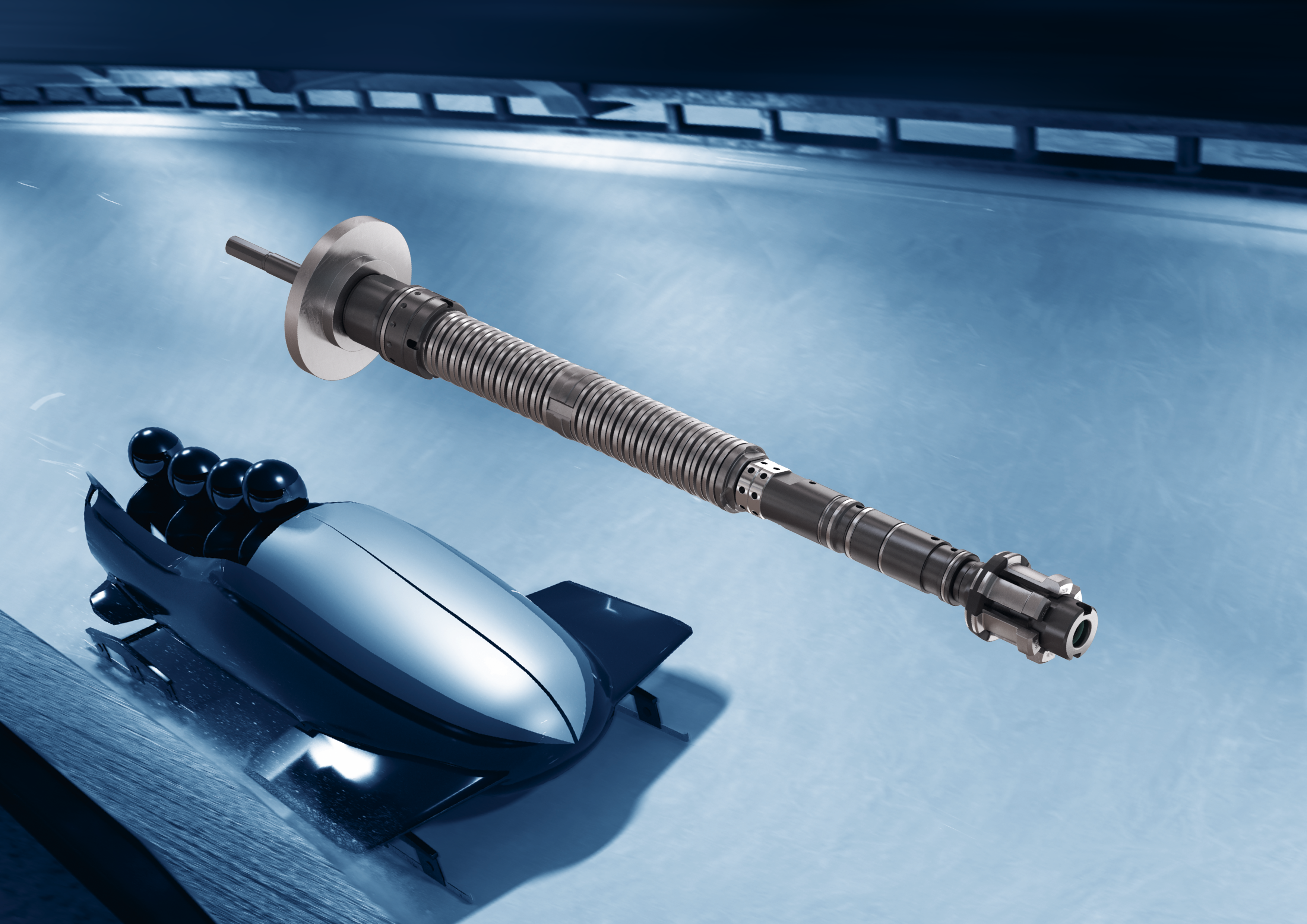Until now, tool clamps for automated spindle-driven Machining Centers have been custom-made, one-off products. Above all, this takes time. But not everything on such an assembly always has to be designed from scratch. The HSK-Flex from Röhm is the first modular tool clamp on the market. It can be used to fit spindles of very different lengths quickly. “Engineered to Order” thus becomes “Configure to Order” production.
Tool clamps for automated, spindle-driven, metal-cutting machines, such as milling and grinding machines, CNC machining centers, or modern woodworking machines, are reminiscent of oversized mechanical pencils. They grip the machining tool holder at the front and are closed and opened from the back with pressure. But that's where the comparability ends: Tool Holder clamps are highly complex assemblies – actually marvels of precision mechanics. Actuated with a minimum of machine power, they are supposed to generate maximum clamping force. In addition, they must hold the tools holders with maximum smoothness, i.e., they must have excellent balancing quality.
The classic tool clamp
The most important components of a tool clamp are the clamping set, clamping unit, and guide piston. The clamping set is almost always designed as a modern HSK interface in compliance with DIN 69893 (ISO 12164) – "HSK" means "hollow shank taper." It was specially developed to meet the criteria of the high speeds and torques of automated machining centers.
The clamping unit consists of a spring assembly – mostly helical disk springs – that is attached to a tie rod. The guide piston forms the back end of the clamping unit; the machine components for opening and closing the tool clamp (release unit) and for feeding cooling lubricant and blowing air (rotary feed-through) are connected to it. Because of the latter, the tie rod is also traversed by channels that transport these media to the front, to the clamping set and tool. There are single- and dual-channel versions.
Double bottleneck
The tool clamp is not visible from the outside: It is located inside the tool spindle, i.e. the rotor of the drive motor, which is designed as a hollow shaft for this purpose. Depending on the machine, tool spindles differ greatly in length and internal contour. For this reason, and because tool clamps are so complex, machine builders usually get them from clamping specialists. They are designed and manufactured according to customer’s drawings. If the dimensions are regularly recurring, the existing design can be utilized and the manufacturing can start immediately to save time. If, however, the machine design or the spindle design changes, the process has to start from scratch. This takes time and expense. In addition, mechanical limitations can be encountered, especially with very small spindles. The clamping unit needs a minimum size to generate the required spindle pull-in force, but it lacks the necessary space to implement it. Both of these factors can challenge machine builders with a double bottleneck, whether they are equipping the spindle for the first time or modernizing it.
It does not have to be made of one piece
Despite individually contoured spindles, not all dimensions of a tool clamp are individual. The system of mechanical engineering standards ensures that many things always recur. "It was this experience from our own manufacturing practice that led us to design a modular tool clamp," says Dennis Wimmer, product manager at Röhm. "This allowed us to separate standards from specials. The standards are efficiently prefabricated and then assembled together with the specials to form the customised final product. That's the HSK-Flex." The tool holder clamping unit is divided into three modules:
• the clamping unit that is always the same length,
• the tie rod extension that can be individually cut to size, and
• the guide piston in various standard machine-typical geometries or customized according to customer requirements.
All three are physically separated from each other and are available with either single-channel or dual-channels.
One-third shorter
But didn’t we just mention the space restrictions inside the spndle? – and now we’ve added a tie rod extension? There is a quick answer to this Dilemma: The clamping unit on the HSK-Flex is actually not equally long but equally short. A design in which powerful and fatigue-resistant a disc spring column replaces the helical disc springs to provide an extremely compact design – up to 30 percent shorter than traditional clamping units. So there even adding the tie rod extension to modularize the assembly, the entire HSK-Flex can even end up shorter than conventional tool clamps.
Special HSK clamping set
However, the whole thing only works because the HSK-Flex clamping set has some special features. Compared to other assemblies, it has higher power transmission factor (1:5 rather than 1:3.5). This means it can generate the same spindle pull-in force with one-third less spring force. In addition to this, the clamping set from Röhm is designed to be particularly spindle designer friendly. Due to its unusually short design, less machining is required on the spindle rotor to accomodate the tool clamp.
Also, the clamping set barely comes into contact with the spindle during tool changes resulting in less wear. In addition, Röhm has developed a patented clip ring to hold the collet segments in the clamping head. It transforms the clamping set change from a fiddly game of patience to a click process lasting just seconds. In this way, the HSK-Flex has all the features and benefits of a true Röhm HSK clamping set.
Three versions
As the machine speed increases, so do the demands on the concentricity of the system – to retain the balancing quality. Röhm has considered this and provides the HSK-Flex in three different versions matching the maximum speed of the installation.
• Allround,
• Performance and
• Precision
Table: Three versions of HSK-Flex
| Allround | Performance | Precision |
Balancing quality | Standard | High | Maximum |
Max. speed | 18,000 rpm | 24,000 rpm | 33,000 rpm |
Max. number of clamping cycles | 2 million | 5 million | 5 million |
Strong and round
The obvious question is whether a system made from individual modules can actually achieve the same mechanical strength and balance quality as one classically made from a single piece. "It can," says Wimmer. "All module connections in the HSK-Flex are designed with a precision fit, secured by grub screws, and additionally bonded. Operational tests have shown that the HSK-Flex can stand up to traditional tool clamps in terms of strength and concentricity." Incidentally, Röhm's modular tool clamp also performs equally well, if not better, than conventional ones in cost comparisons.
About Röhm GmbH:
Röhm GmbH, with its headquarters in Sontheim an der Brenz (Baden-Württemberg) and production sites in Dillingen (Bavaria) and St. Georgen (Black Forest), specializes in the development, design, and manufacture of high-precision, robust and durable clamping and gripping devices. The products are "Made in Germany." Röhm's clamping and gripping devices are used worldwide by almost all renowned manufacturers in the automotive industry, railroad technology, watches, medical technology, power engineering as well as in woodworking. Röhm has its own subsidiaries in France, Italy, Switzerland, Spain, Poland, USA, China, and Mexico. Founded in 1909, the company quickly became known worldwide for its drill chucks. To this day, Röhm develops and manufactures drill chucks at the Sontheim location that are used worldwide by almost all manufacturers on stationary as well as hand-operated electric tools for screwing and drilling.

